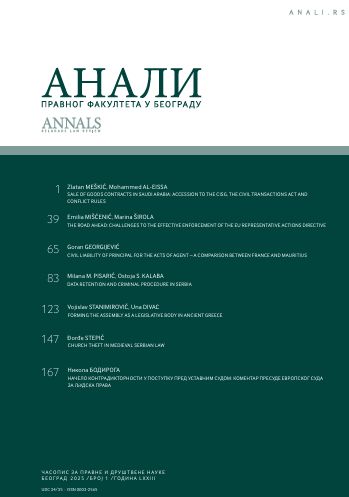CHURCH THEFT IN MEDIEVAL SERBIAN LAW
CHURCH THEFT IN MEDIEVAL SERBIAN LAW
Author(s): Đorđe StepićSubject(s): History of Law, Middle Ages
Published by: Правни факултет Универзитета у Београду
Keywords: Sacrilege (ἱεροσυλία, sacreligium); Church theft; Zakonopravilo (Nomocanon) of Saint Sava; Syntagma of Matthew Blastares; Medieval Serbian and Rhomaian (Byzantine) law
Summary/Abstract: Since ancient times, theft of sacred objects has been recognized as a qualified form of theft, as a typical property crime, but also as an act of sacrilege. In medieval Serbian law, the canonical and secular regulations are found in the two typikons and the Zakonopravilo (Nomocanon) of Saint Sava, as well as in the later compilations of Rhomaian (Byzantine) law of the Serbian redaction during the reign of emperor Dušan – Matthew Blastares’ (Abbreviated) Syntagma and the so-called Law of Emperor Justinian. Between these two great waves of reception of Rhomaian law, King Milutin’s Banjska and Gračanica charters summarily regulate church theft. The aim of this paper is to conceptually separate the church theft from other crimes against church property and to gain a better understanding of church theft in medieval Serbian law through analysis of the available sources.
Journal: Анали Правног факултета у Београду
- Issue Year: 73/2025
- Issue No: 1
- Page Range: 147-165
- Page Count: 19
- Language: English

